
An altarpiece is an work of art in painting, sculpture or relief representing a religious subject made for placing at the back of or behind the altar of a Christian church. Though most commonly used for a single work of art such as a painting or sculpture, or a set of them, the word can also be used of the whole ensemble behind an altar, otherwise known as a reredos, including what is often an elaborate frame for the central image or images. Altarpieces were one of the most important products of Christian art especially from the late Middle Ages to the era of Baroque painting.
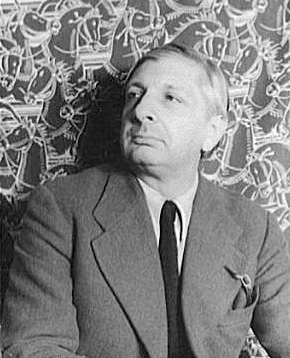
Giuseppe Maria Alberto Giorgio de Chirico was an Italian artist and writer born in Greece. In the years before World War I, he founded the scuola metafisica art movement, which profoundly influenced the surrealists. His best-known works often feature Roman arcades, long shadows, mannequins, trains, and illogical perspective. His imagery reflects his affinity for the philosophy of Arthur Schopenhauer and of Friedrich Nietzsche, and for the mythology of his birthplace.

Carlo Carrà was an Italian painter and a leading figure of the Futurist movement that flourished in Italy during the beginning of the 20th century. In addition to his many paintings, he wrote a number of books concerning art. He taught for many years in the city of Milan.

Metaphysical painting or metaphysical art was a style of painting developed by the Italian artists Giorgio de Chirico and Carlo Carrà. The movement began in 1910 with de Chirico, whose dreamlike works with sharp contrasts of light and shadow often had a vaguely threatening, mysterious quality, "painting that which cannot be seen". De Chirico, his younger brother Alberto Savinio, and Carrà formally established the school and its principles in 1917.
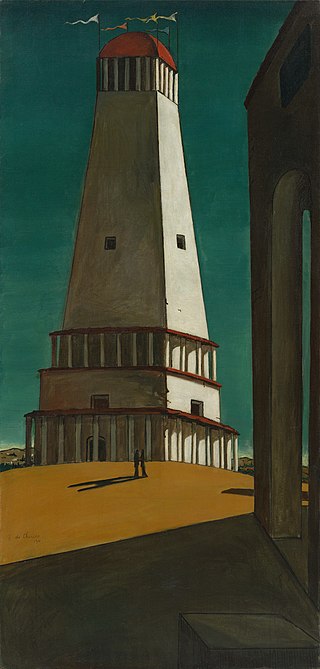
The Nostalgia of the Infinite is a painting by Italian metaphysical painter Giorgio de Chirico, dated of 1911, but most likely painted in 1912-113.

The Song of Love is a 1914 painting by Italian metaphysical painter Giorgio de Chirico. It is one of the most famous works by Chirico and an early example of his pre-surrealist style, though it was painted ten years before the movement was "founded" by André Breton in 1924.

Gare Montparnasse (The Melancholy of Departure) (Italian: La stazione di Montparnasse) is an oil on canvas painting by the Italian metaphysical painter Giorgio de Chirico, from 1914. It is held at the Museum of Modern Art, in New York.
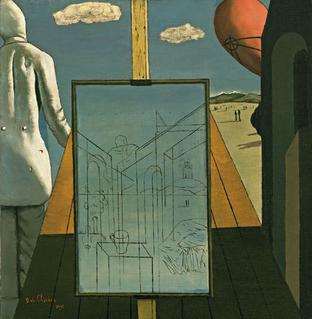
The Double Dream of Spring is a painting by the Italian metaphysical painter Giorgio de Chirico. It is held at the Museum of Modern Art, in New York.

The Melancholy of Departure is an oil on canvas painting by the Italian metaphysical painter Giorgio de Chirico, from 1916. This painting was created after Chirico returned to Italy from Paris to join the Italian Army in World War I. It is held at the Tate Modern, in London.
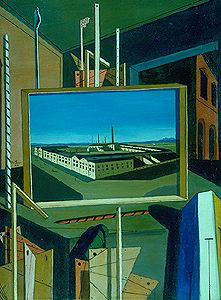
Metaphysical Interior with Large Factory is an oil-on-canvas painting by the Italian metaphysical painter Giorgio de Chirico, from 1916. It is part of a series that extended late into de Chirico's career.

The Disquieting Muses is a painting by the Italian metaphysical painter Giorgio de Chirico. There are two versions of this painting, the original is in the Gianni Mattioli private collection, in Milan, and the other is at the Pinakothek der Moderne, in Munich.
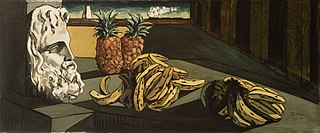
'The Transformed Dream is an oil on canvas painting by the Italian metaphysical painter Giorgio de Chirico, from 1913. It is held at the Saint Louis Art Museum, in St. Louis.

The Enigma of the Hour is an oil on canvas painting by the Italian metaphysical painter Giorgio de Chirico. He created the work during his early period, in Florence, when he focused on metaphysical depictions of town squares and other urban environments. It is not clear whether it was created in 1910 or 1911.
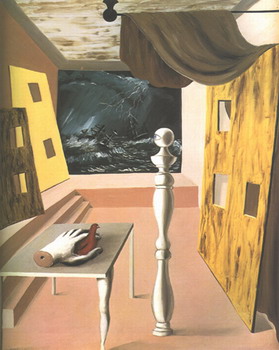
The Difficult Crossing(La traversée difficile) is the name given to two oil-on-canvas paintings by the Belgian surrealist René Magritte. The original version was completed in 1926 during Magritte's early prolific years of surrealism and is currently held in a private collection. A later version was completed in 1963 and is also held in a private collection.

The Child's Brain is an oil-on-canvas painting by the Italian artist Giorgio de Chirico. It was completed in 1914 in Italy and is an example of the metaphysical art style. The painting measures 80 by 65 centimeters and is now housed at Moderna Museet, Stockholm. The subject of The Child's Brain is a nude young man, seen from the waist up, who is standing in back of a table with his eyes closed.
The Prodigal Son is a painting by the Greek-born Italian artist Giorgio de Chirico. It is painted in tempera on canvas and was completed in 1922 as de Chirico was in transition from the Metaphysical style of his earlier works to the neoclassicism he essayed in the 1920s. The biblical subject matter is interpreted by de Chirico as a stone effigy of a father placing his hand on the shoulder of a mannequin representing the son. The dimensions of the painting are 87 by 59 centimeters. It is housed at Museo del Novecento, Milan, Italy.
Venice, Bridge of Rialto is an oil on canvas painting by Giorgio of Chirico, from 1950. It is held at the Museo Soumaya, in Mexico City. The style of this work moves away from his early period of the metaphysical painting, characterized by the inclusion of architecture, sculptures and big empty spaces.
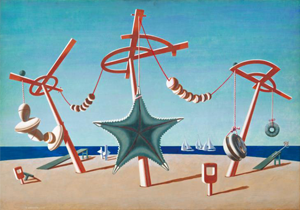
The Beached Margin is a 1937 painting by the English painter Edward Wadsworth. It depicts a beach still life where three poles in the sand are decorated with semi-abstract objects and geometrical shapes.

The Great Tower is an oil on canvas painting by the Italian artist Giorgio de Chirico, from 1921. It is held in the Pushkin Museum, in Moscow. The Russian Ministry of Culture acquired it in 1992 for the National Centre for Contemporary Arts, though the latter then transferred it to the Pushkin Museum in honour of its eightieth anniversary.

Hebdomeros is a 1929 book by Italian painter Giorgio de Chirico. Chirico did not produce any other long-form writing. The book is narrated in the third person and loosely concerns the movement of a man, Hebdomeros, westward. Writing in The Kenyon Review, Alan Burns referred to the text as a "surrealist dream novel".

















